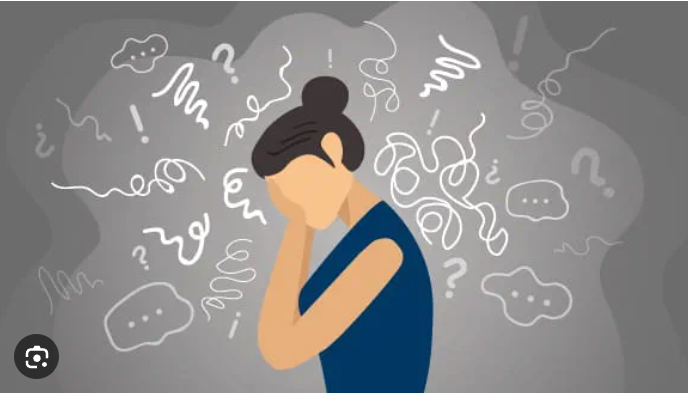If you’re suffering from chronic anxiety, whether diagnosed or not, it’s important that you don’t just sit back and let life hit you. You need a plan in place for fighting back and discovering peace.
What is General Anxiety Disorder (GAD)?
Anxiety is defined as a feeling of dread, fear, and uneasiness over situations that you can’t control. While it’s classified as a mental disorder, it can also produce numerous physical symptoms, including restlessness, sweating, rapid heartbeat, and digestive issues.
Everyone experiences anxiety from time to time, but it typically shows up in isolated situations. When anxiety is no longer isolated, mental health professionals refer to it as general anxiety disorder, or GAD.
“Worrying every now and again is normal,” Renewed Freedom Center. “However, people with GAD are worried almost all of the time about various everyday activities that would be considered insignificant by others.”
If that describes you, it’s important that you do something about your situation sooner rather than later.
6 Ways to Address GAD
Living with GAD doesn’t have to define you. There are ways to address your underlying struggle with anxiety and proactively attack the symptoms so they no longer rule your life. Here are a few options:
- Establish Mindfulness and Relaxation Techniques
In the chaos of anxiety, mindfulness is like finding a quiet place where you can collect your thoughts and enjoy a little peace. It’s about grounding yourself in the present moment, acknowledging your thoughts and feelings without judgment.
What does this look like? Practicing mindfulness can be as simple as focusing on your breath or engaging in guided meditation. These techniques can help to slow down racing thoughts and bring a sense of calm to your day.
Relaxation techniques are also crucial (and often go hand-in-hand with mindfulness). Activities like yoga, tai chi, or even gentle stretching can help release the physical tension that often accompanies anxiety. The key is consistency – dedicating a few minutes each day to these practices can significantly affect how you feel.
- Create Healthy Routines
Structure can be incredibly soothing for an anxious mind. Establishing a routine helps create predictability and a sense of control.
- Start by setting regular times for waking up, meals, work or school tasks, exercise, and relaxation.
- Ensure your routine is balanced – include activities that strengthen your body, mind, and spirit.
- Eliminate unhealthy habits, including obvious ones like drinking and smoking, as well as the not-so-obvious ones, like eating a diet that’s high in processed foods.
Remember, the goal isn’t rigidity but rather to create a framework that brings stability to your days. You’re trying to give yourself strong pillars that you can cling to in the midst of uncertainty and confusion.
- Seek Professional Support
Sometimes, the best way to tackle anxiety is with the help of a professional. Therapists trained in anxiety disorders can offer valuable insights and coping strategies. Techniques like Cognitive Behavioral Therapy (CBT) are particularly effective in addressing the thought patterns that fuel anxiety.
Therapy can provide a safe space to explore your feelings, understand the roots of your anxiety, and develop personalized strategies for management. It’s one of the best ways to proactively address your underlying situation and address anxiety at the root.
- Integrate Physical Activity
Exercise releases endorphins, the body’s natural mood lifters, and can significantly reduce stress levels. You don’t need to engage in intense workouts – even moderate activities like walking, cycling, or swimming can be beneficial. The goal is to find an activity you enjoy and make it a regular part of your life. This not only improves your physical health but also offers a mental break from anxiety.
- Practice Mindful Breathing Exercises
Breathing exercises are a simple yet powerful tool in managing anxiety. When you’re feeling overwhelmed, try focusing solely on your breath. (That might sound hokey, but it works.)
Techniques like deep belly breathing or the 4-7-8 technique (inhale for 4 seconds, hold for 7, exhale for 8) can be particularly effective. These exercises help regulate your body’s response to stress, calming your nervous system and reducing the intensity of anxiety symptoms.
- Embrace Self-Compassion
Be gentle with yourself. Living with chronic anxiety is challenging, and it’s important that you practice self-compassion. Acknowledge your feelings without judgment and remind yourself that you’re doing the best you can. Celebrate small victories and don’t berate yourself for having anxious days. They happen and shouldn’t cause you to feel guilty or more overwhelmed than you already are. Self-compassion is about treating yourself with the same kindness and understanding that you would offer a good friend.
Putting it All Together
Navigating life with chronic anxiety is undeniably tough, but it’s a journey you don’t have to embark on alone. By integrating mindfulness and relaxation techniques, establishing healthy routines, seeking professional support, incorporating physical activity, practicing mindful breathing, embracing self-compassion, and fostering a supportive network, you can build a life that’s not just about surviving anxiety but thriving in spite of it.
Each step is a step towards a more peaceful and balanced life.



